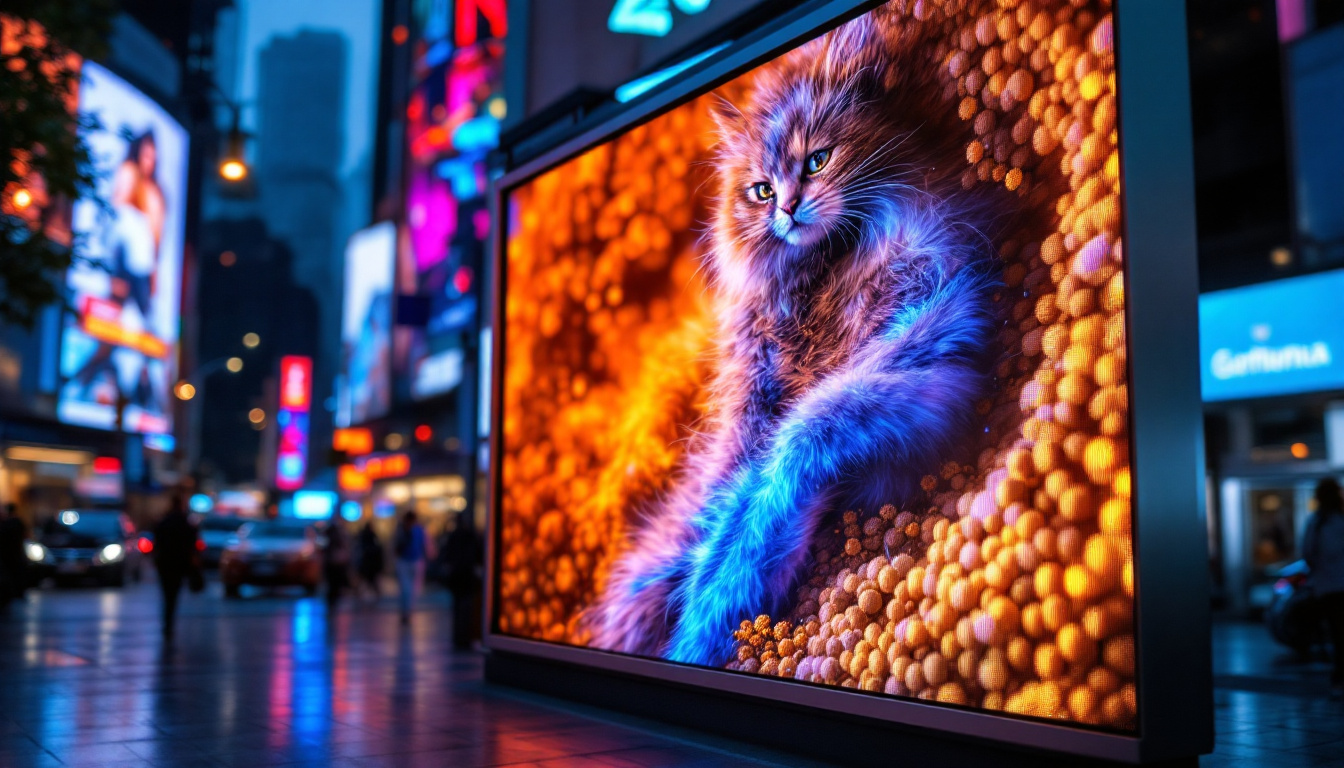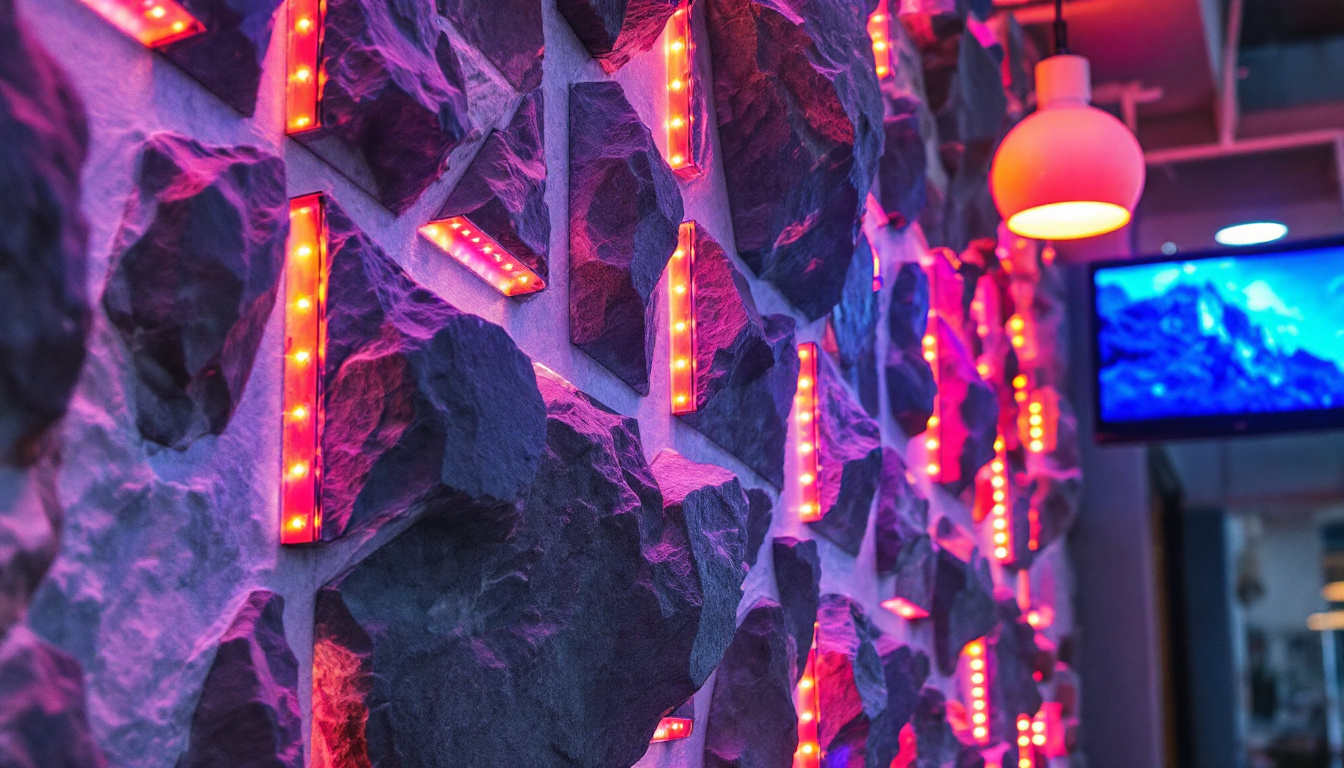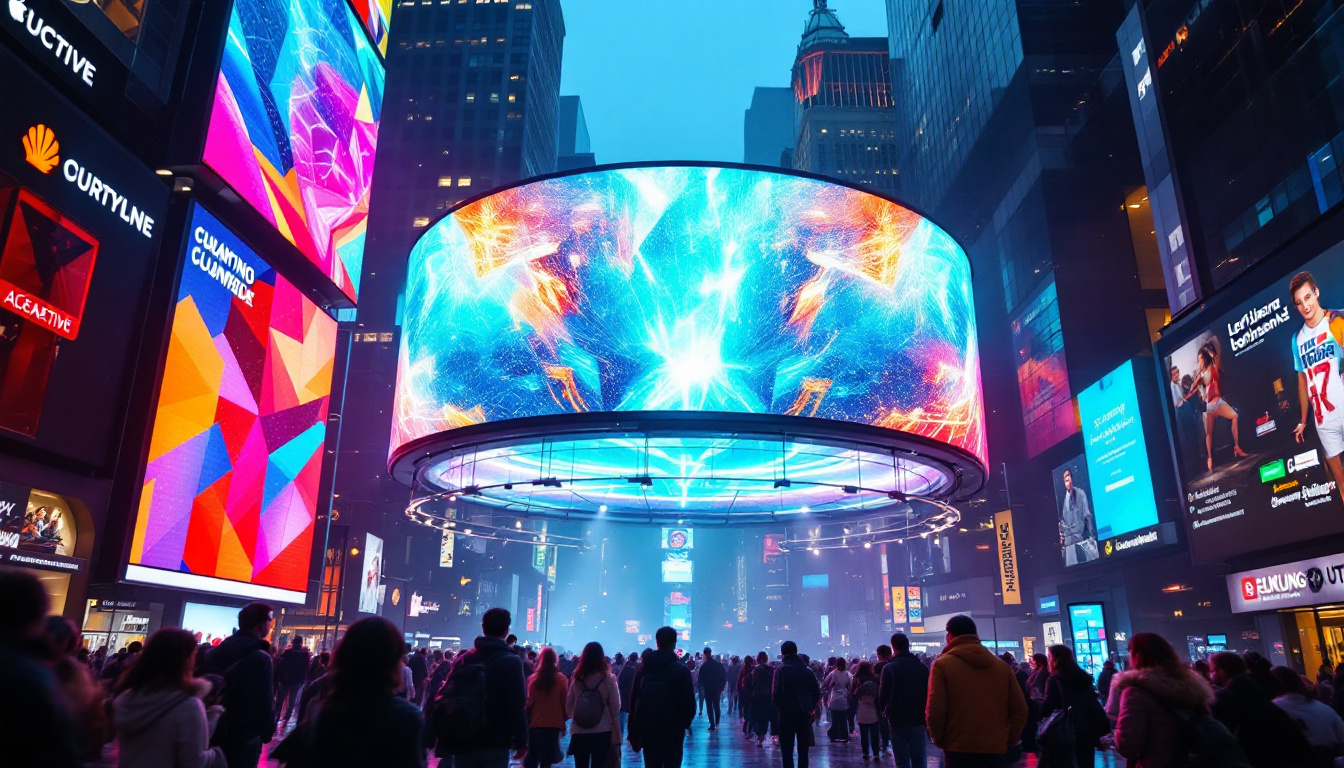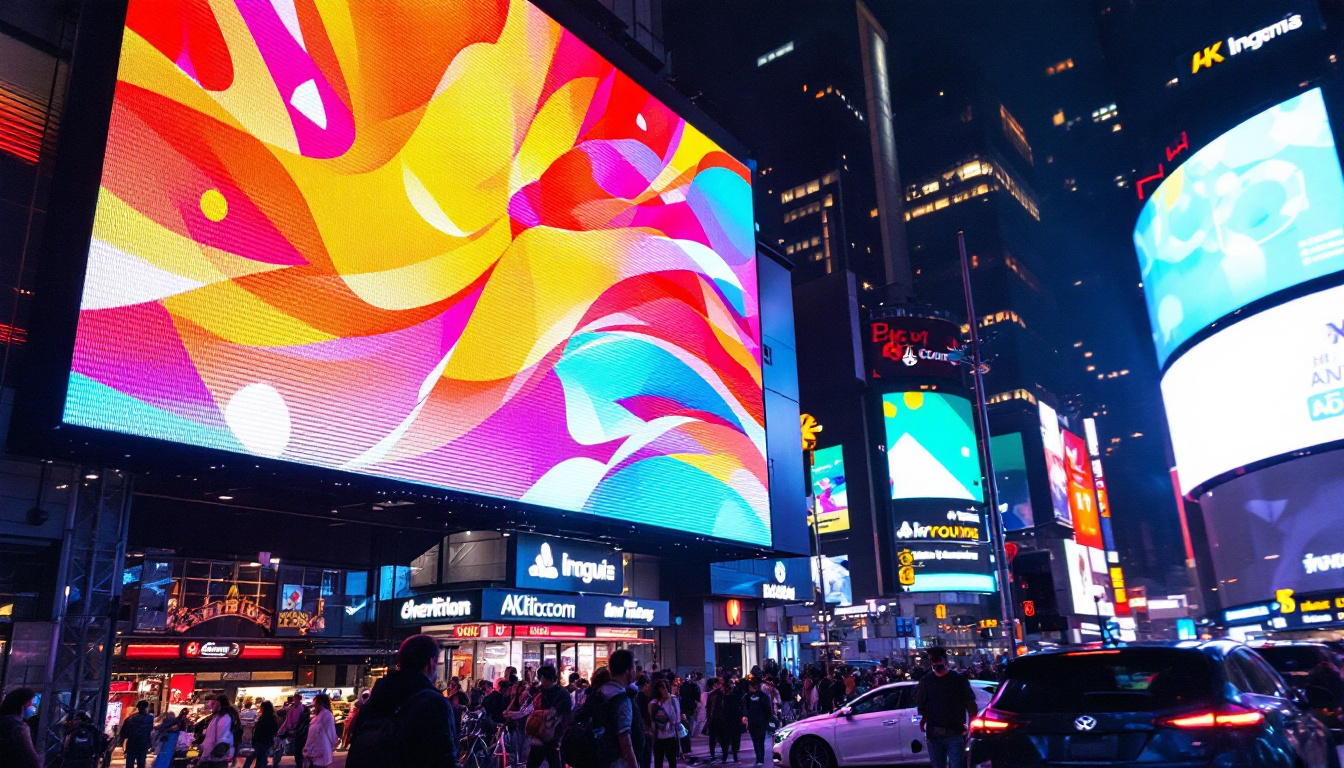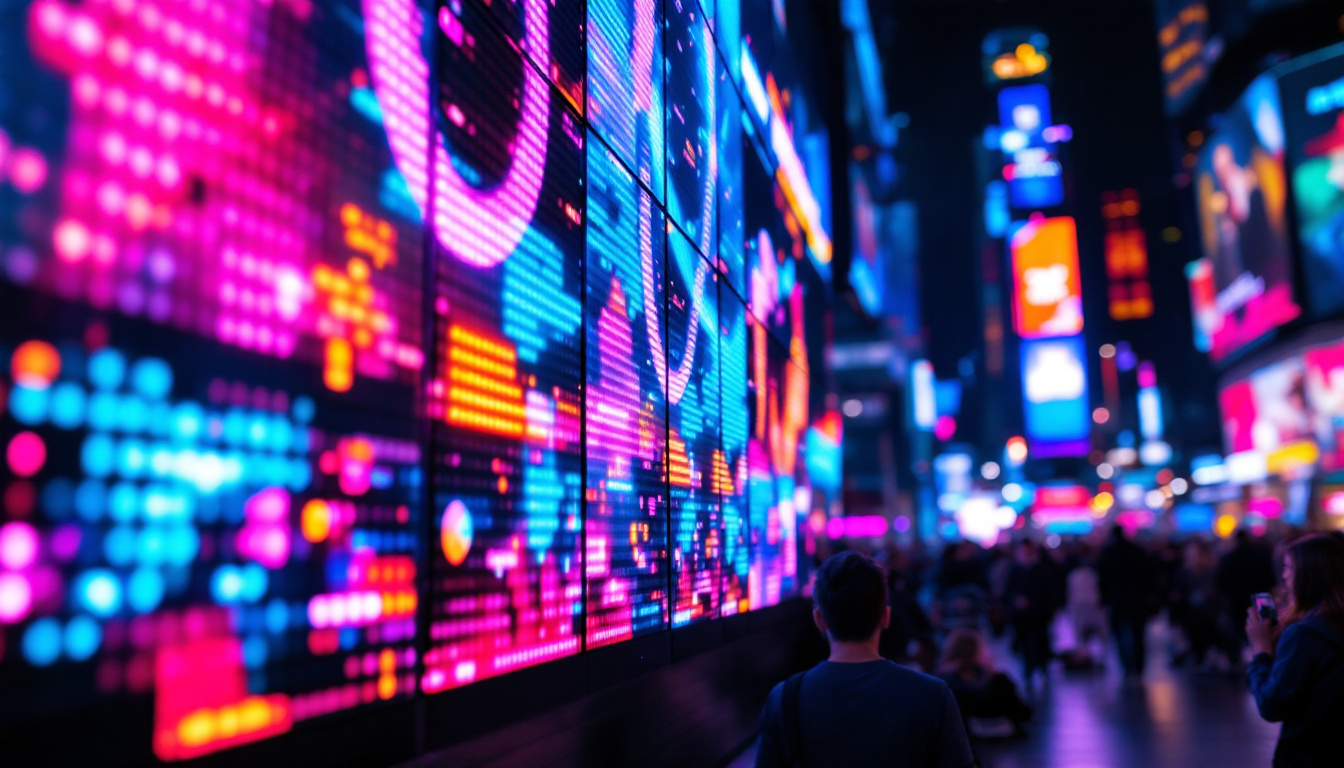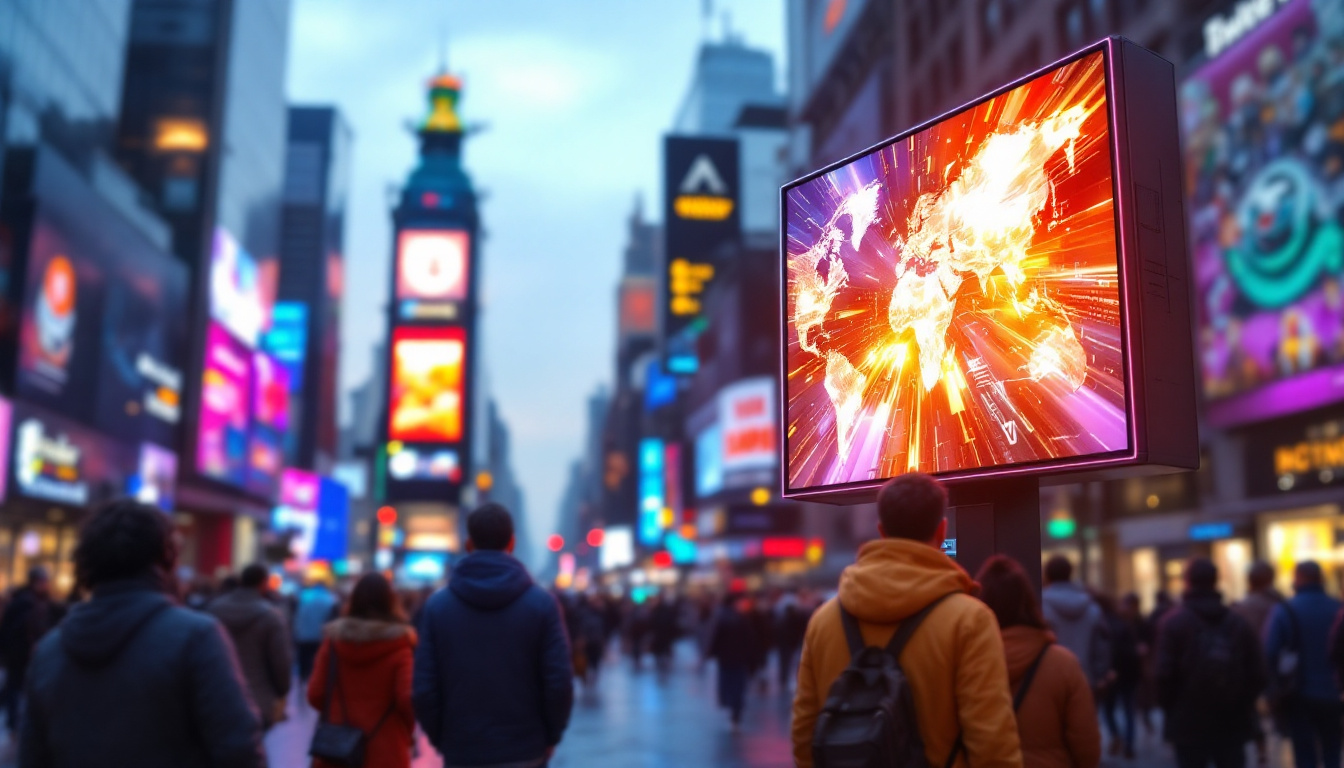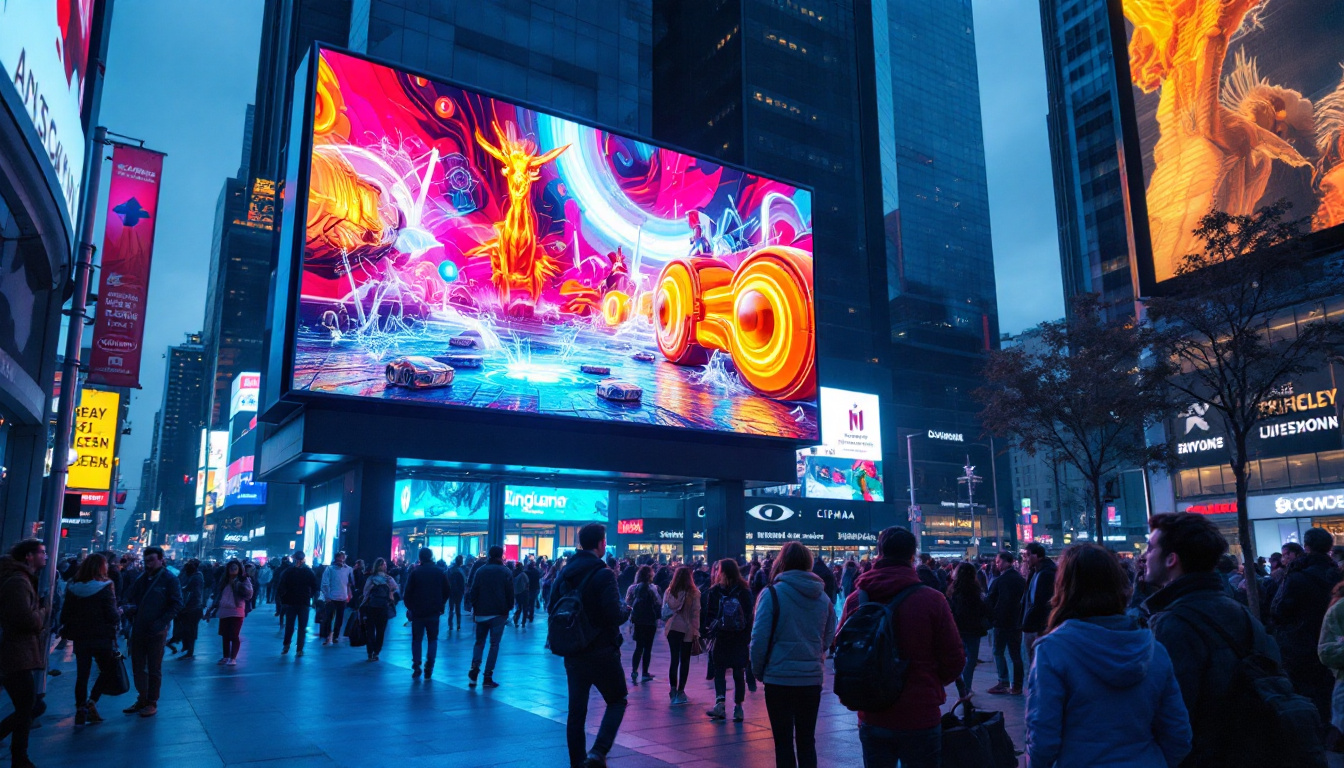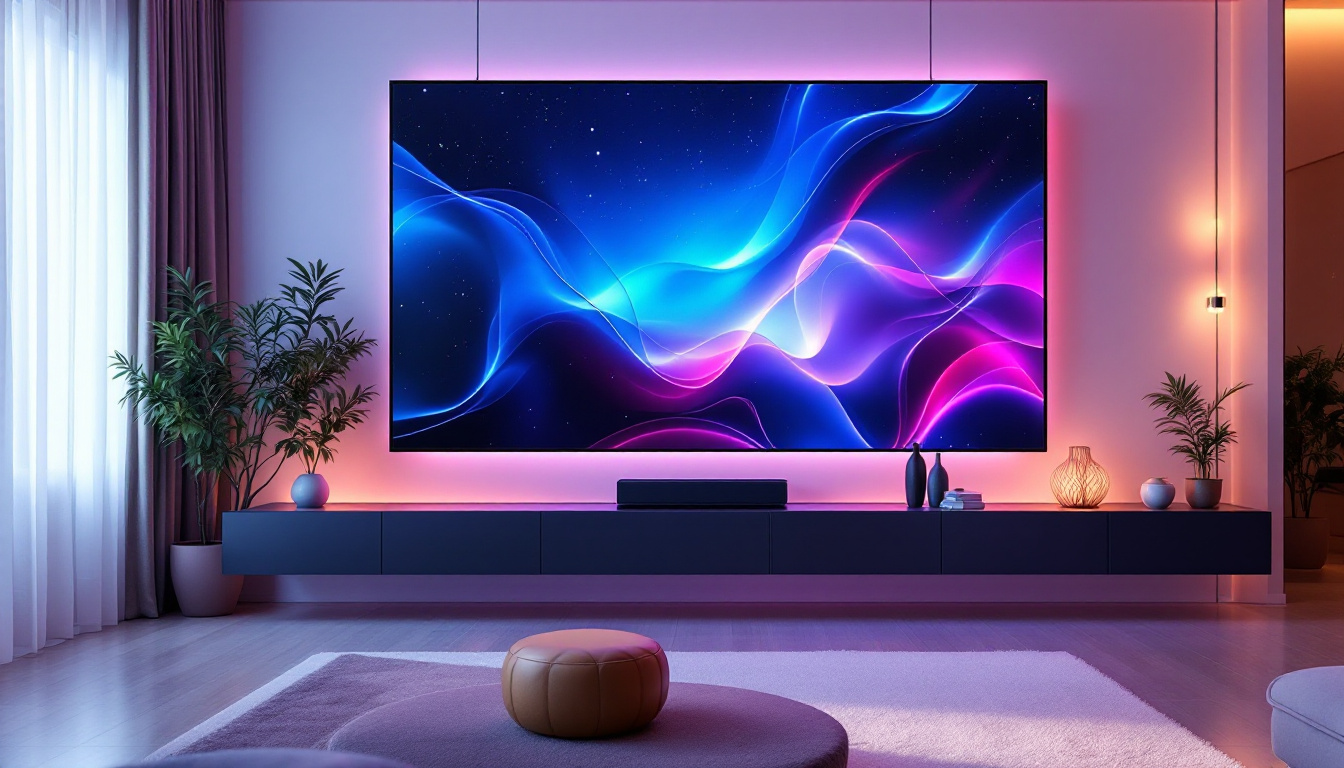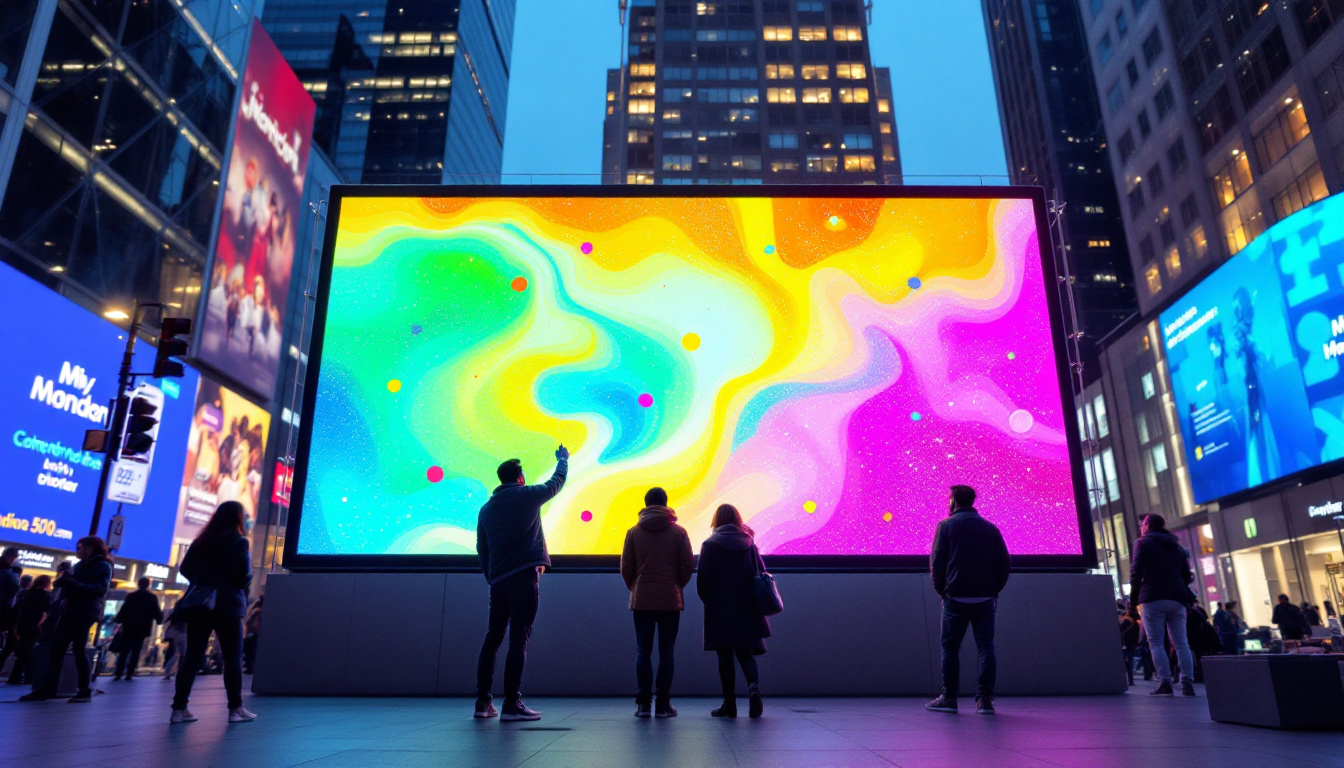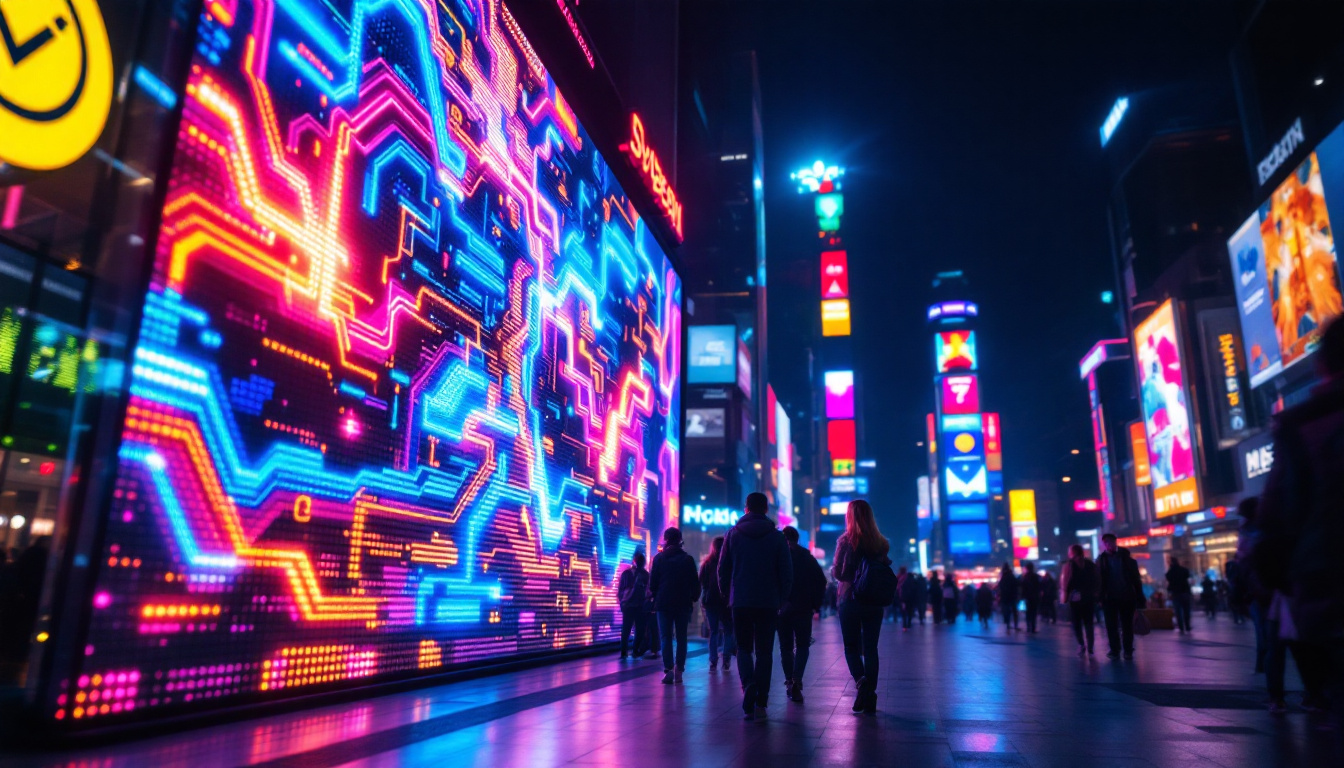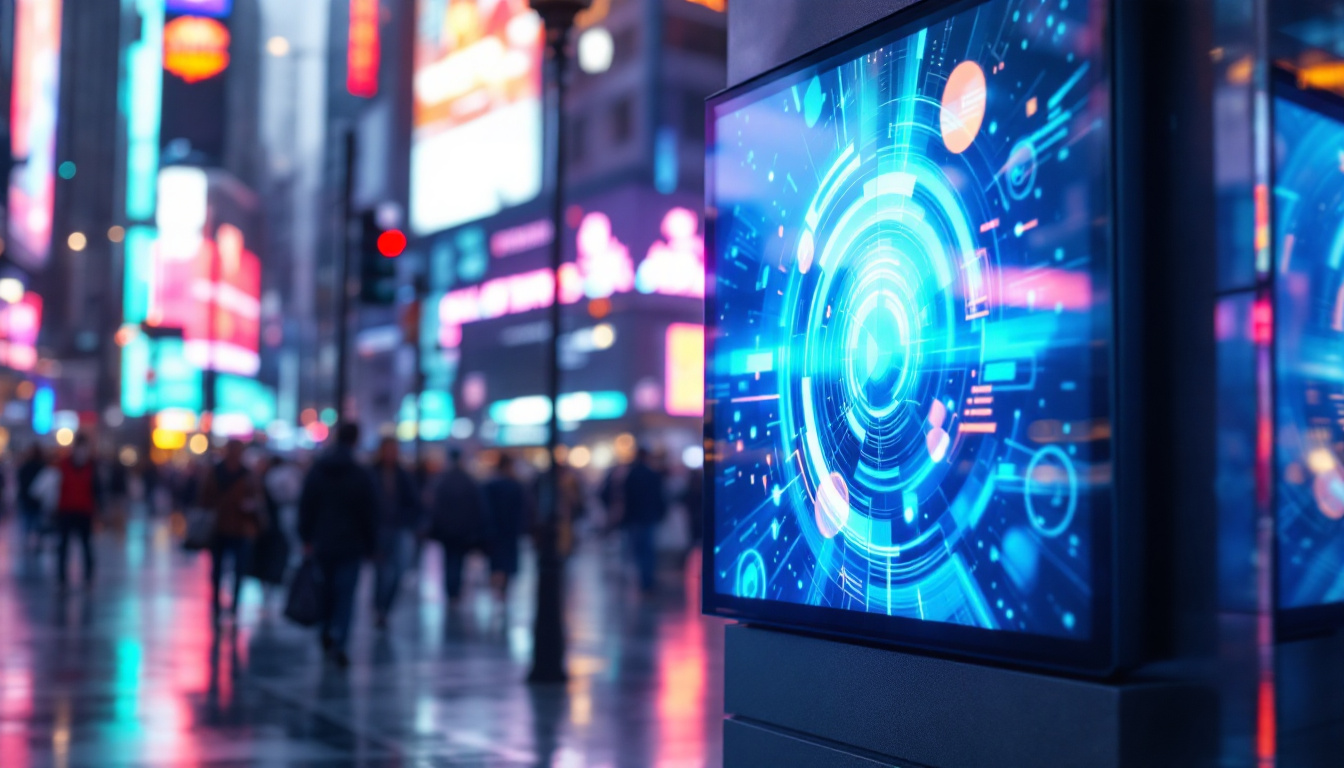In an era where visual communication is paramount, digital signage has emerged as a powerful tool for advertising. Among the various technologies available, LED displays stand out for their vibrancy and versatility. This article explores the significance of digital signage in advertising, delving into the workings of LED displays, their advantages, and their applications across various industries.
Understanding Digital Signage
Digital signage refers to the use of digital displays to convey information, advertisements, and other content to an audience. It encompasses a wide range of technologies, including LCD, LED, and projection systems. Digital signage can be found in various settings, from retail stores and restaurants to airports and stadiums.
The Evolution of Digital Advertising
Digital signage has evolved significantly over the years. Initially, static billboards dominated the advertising landscape. However, with advancements in technology, advertisers began to explore dynamic content that could be updated in real-time. This shift not only enhanced engagement but also allowed for targeted messaging based on audience demographics and behaviors.
Today, digital signage is a staple in advertising strategies, providing businesses with the ability to reach consumers in innovative ways. The integration of LED displays has further revolutionized this field, offering unparalleled brightness and clarity. Moreover, the rise of content management systems has empowered businesses to easily schedule and manage their digital content, ensuring that the right message reaches the right audience at the right time. This flexibility has made it possible for companies to respond swiftly to market trends and consumer preferences, further enhancing the effectiveness of their advertising campaigns.
How LED Displays Work
LED (Light Emitting Diode) displays consist of numerous tiny diodes that emit light when an electric current passes through them. These diodes are arranged in a grid, creating pixels that can display a wide range of colors. The technology behind LED displays allows for high-resolution images and videos, making them ideal for capturing attention.
LED displays can be categorized into two main types: indoor and outdoor. Indoor displays are typically used in shopping malls, conference rooms, and airports, while outdoor displays are designed to withstand the elements and are often found in billboards and building facades. The brightness and durability of LED technology make it suitable for various environments. Additionally, advancements in LED technology have led to the development of flexible and transparent displays, opening up new possibilities for creative advertising solutions. These innovations allow for seamless integration into architectural designs, enabling brands to create immersive experiences that captivate audiences in ways previously unimaginable.
Advantages of LED Displays in Advertising
LED displays offer numerous advantages that make them a preferred choice for advertisers. Their ability to deliver vibrant visuals and dynamic content is just the beginning. Below are some key benefits of using LED displays for advertising.
High Visibility and Impact
One of the most significant advantages of LED displays is their high visibility. The brightness of LED screens ensures that content remains clear and eye-catching, even in direct sunlight. This is particularly important for outdoor advertising, where competition for attention is fierce.
Moreover, the dynamic nature of LED displays allows for animated content, which can significantly enhance engagement. Advertisers can create captivating visuals that draw viewers in, making it easier to convey messages effectively. The use of motion graphics and video can evoke emotions and create memorable experiences for passersby, leading to higher recall rates of the advertised products or services.
In addition to their visual appeal, LED displays can be strategically placed in high-traffic areas, maximizing exposure. Whether it’s a bustling city square or a busy shopping mall, these screens can be positioned to capture the attention of a diverse audience, ensuring that messages reach potential customers at the right moment.
Cost-Effectiveness and Flexibility
While the initial investment in LED technology can be substantial, the long-term savings are noteworthy. LED displays have a longer lifespan compared to traditional signage, reducing replacement and maintenance costs. Additionally, the ability to update content remotely means that advertisers can change messages without incurring printing costs.
The flexibility of LED displays allows businesses to tailor their advertising strategies to different times of day or specific events. For instance, a retail store can promote different products during peak shopping hours and switch to promotional messages during quieter times. This adaptability not only maximizes the effectiveness of advertising campaigns but also allows for real-time adjustments based on audience behavior or current trends.
Furthermore, LED displays can support a variety of content formats, from simple text messages to complex video advertisements. This versatility enables brands to experiment with different creative approaches, ensuring that their advertising remains fresh and relevant to their target audience.
Environmental Considerations
As sustainability becomes increasingly important, LED displays offer an eco-friendly alternative to traditional signage. They consume less energy and have a longer lifespan, which means fewer resources are used over time. Many LED displays are also made from recyclable materials, further reducing their environmental impact.
In addition to their energy efficiency, LED displays can contribute to a brand’s sustainability goals. By utilizing digital advertising, companies can significantly reduce paper waste associated with printed materials. This shift not only helps the environment but also aligns with the values of consumers who prioritize eco-conscious brands. As more businesses adopt LED technology, the cumulative effect can lead to a significant reduction in the carbon footprint of advertising as a whole.
Applications of LED Displays in Various Industries
The versatility of LED displays allows them to be utilized across a wide range of industries. From retail to transportation, the applications are diverse and impactful. Here are some notable examples:
Retail and Commercial Spaces
In retail environments, LED displays serve as powerful marketing tools. They can showcase promotions, highlight new products, and create immersive shopping experiences. For instance, a fashion retailer might use an LED wall to display runway shows, enticing customers to engage with the brand.
Additionally, LED displays can be integrated into point-of-sale systems to provide customers with information about products, enhancing the shopping experience. This not only helps in driving sales but also fosters brand loyalty.
Transportation Hubs
Airports, train stations, and bus terminals are prime locations for LED displays. They provide essential information to travelers, such as flight schedules, gate changes, and safety announcements. The clarity and visibility of LED screens ensure that important messages are easily communicated.
Moreover, advertising opportunities abound in these settings. Brands can reach a captive audience, promoting products and services to travelers who are often in a receptive mindset.
Entertainment Venues
In the entertainment industry, LED displays play a crucial role in enhancing the audience experience. From concerts and sporting events to theaters and amusement parks, these displays can create stunning visual effects that captivate audiences.
For example, stadiums often utilize large LED screens to display live feeds, replays, and advertisements. This not only keeps fans engaged but also provides sponsors with valuable exposure. The integration of LED technology in entertainment venues has transformed how audiences interact with events.
Challenges and Considerations
While LED displays offer numerous advantages, there are also challenges and considerations that businesses must keep in mind. Understanding these factors can help organizations make informed decisions when implementing digital signage solutions.
Initial Investment and Maintenance
The initial cost of purchasing and installing LED displays can be significant. Businesses must consider their budgets and weigh the potential return on investment. However, it is essential to view this as a long-term investment rather than a short-term expense.
Additionally, while LED displays require less maintenance than traditional signage, they are not entirely maintenance-free. Regular upkeep is necessary to ensure optimal performance and longevity. Businesses should factor in these ongoing costs when planning their digital signage strategy.
Content Management
Creating and managing content for LED displays can be a complex task. Businesses must ensure that their messaging is relevant, engaging, and updated regularly. This requires a strategic approach to content management, including the use of software solutions that facilitate scheduling and remote updates.
Furthermore, the effectiveness of digital signage relies heavily on the quality of the content displayed. Investing in professional design and production can significantly enhance the impact of LED advertising.
The Future of LED Displays in Advertising
The future of LED displays in advertising looks promising, with ongoing advancements in technology and increasing adoption across industries. As businesses continue to embrace digital signage, several trends are emerging that will shape the landscape.
Integration with Smart Technology
As smart technology becomes more prevalent, the integration of LED displays with IoT (Internet of Things) devices is expected to rise. This will enable advertisers to deliver personalized content based on real-time data, enhancing the relevance of messages and improving customer engagement.
For example, a retail store could use data from customer interactions to display targeted promotions on LED screens, creating a more personalized shopping experience. This level of customization is likely to become a standard expectation among consumers.
Augmented Reality and Interactive Displays
Augmented reality (AR) is another trend that is gaining traction in the advertising world. By combining LED displays with AR technology, businesses can create interactive experiences that engage customers in new ways. For instance, a beauty brand might allow customers to virtually try on makeup using an LED display, enhancing the shopping experience.
Interactive displays can also encourage audience participation, making advertisements more memorable. This shift towards interactive content is likely to redefine how brands connect with consumers.
Conclusion
Digital signage, particularly through the use of LED displays, has transformed the advertising landscape. With their high visibility, dynamic content capabilities, and versatility, LED displays offer businesses a powerful medium for communication and engagement. While challenges exist, the benefits far outweigh them, making LED displays a worthwhile investment for advertisers.
As technology continues to evolve, the future of LED displays in advertising looks bright. By embracing innovative approaches and leveraging data-driven strategies, businesses can harness the full potential of digital signage to connect with their audiences effectively.
In a world where attention is fleeting, LED displays provide a compelling way for brands to stand out and make a lasting impression. The journey of digital signage is just beginning, and its impact on advertising will only continue to grow.
Illuminate Your Brand with LumenMatrix
Ready to elevate your advertising strategy with high-impact LED displays? LumenMatrix is at the forefront of LED display innovation, offering a diverse range of solutions tailored to your unique needs. From captivating Indoor and Outdoor LED Wall Displays to dynamic Vehicle and Sports LED Displays, our technology is designed to make your brand shine. Experience the future of visual communication with our Custom, All-in-One, and Transparent LED Displays, and see how our commitment to excellence can transform your messaging. Check out LumenMatrix LED Display Solutions today and take the first step towards unforgettable advertising that resonates with your audience.

